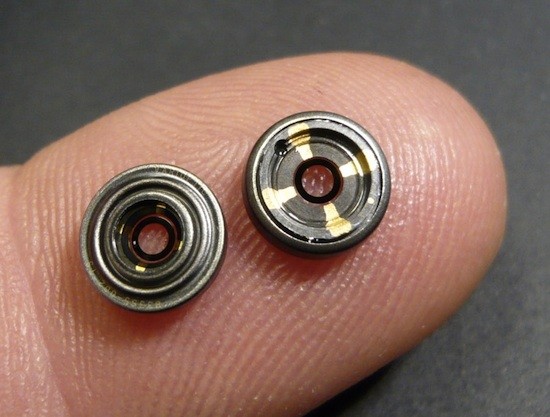Here’s a cool link that’s full of geek and bound to make your brain hurt. A post on EOSHD from last year talks about next generation mobile phone camera lenses by Sony and Omnivision, the current manufacturer of the iPhone’s cameras. With all of the recent talk about who will be manufacturing the camera in the “iPhone 5”, I thought it would be a good time to trot this post out again.
The article describes recent patents for two different technology goes that will greatly improve the experience of shooting with a mobile phone camera, including the iPhone.
Currently, all iPhones use a “rolling” shutter where an image is not captured all at once, but in a sequence one row of pixels at a time. You may have noticed weird (or pretty cool) slanted distortions in your iPhone photos when shooting fast-moving objects. See my sample image above.
OmniVision’s next-generation phone cameras may have a small, phone-sized sensor with a “global” shutter where the entire image sensor captures a photo all at once. This would greatly improve captures made of fast-moving objects.
Sony’s patent describes a phone-sized liquid lens with no moving parts which would bring built-in optical zoom to mobile phone photography. Currently, all iPhones have lower quality digital zoom, which is merely in-app cropping and resampling. Images shot with digital zoom are not as sharp as those shot with optics.
Two very cool new technologies. Both will improve the quality of mobile phone photography as it evolves away from digital lo-fi. I don’t mind the iPhone’s rolling shutter. Knowing that it’s there and shooting around it (or shooting with it) is part of the iPhone’s digital lo-fi charm for me. The optical zoom lens, though, would be a very cool addition to the iPhone. It would reduce the need for bulky and clunky external zoom lens attachments and help snap clearer, sharper photos when moving in close isn’t an option.
I doubt we’ll see either new technology in the iPhone 5. While we’re unlikely to see both technologies in one phone camera for a while, adding the two to existing iPhone camera sensors would make one heluva Frankencam.
It is certainly very exciting to realise that future cameras are going to be almost entirely electrical with no mechanical parts. The liquid lens is the step forward for optics required to reduce the size of such lenses dramatically, especially zoom lenses. The global shutter eliminates the mechanical curtain and any resulting noise, whilst improving image quality for video and dramatically increasing continuous shooting rates to above 24 frames per second at full resolution, depending on whether future image processors can handle such a lot of data in quick succession.
Here’s the link to the entire post on EOSHD.
~~~~



